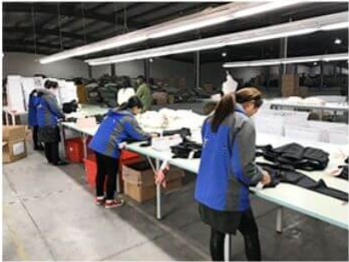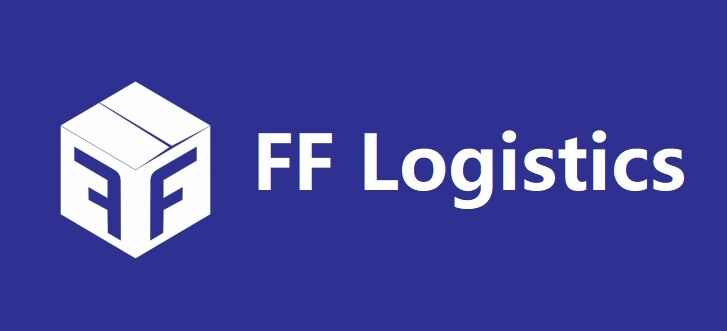Breaking Down China Fulfillment Service Costs
Key Cost Components in China Fulfillment
Understanding the cost components of China fulfillment is vital for any business looking to optimize its international supply chain. The key expenses include storage fees, which are typically charged per cubic meter per month, handling fees for picking and packing products, shipping fees that vary based on weight and destination, and taxes, including customs duties for products entering different countries. These costs can significantly fluctuate depending on the volume of products being handled and the level of service required—ranging from basic logistics to premium, expedited handling. E-commerce businesses often encounter different cost structures compared to traditional retail, as they may need to focus more on handling smaller, more frequent shipments. This distinction highlights why careful management of these costs is crucial for maintaining competitive Pricing strategies when dealing with international fulfillment.
Pricing Comparison: China vs. Western Fulfillment Centers
Comparing China fulfillment centers to their Western counterparts reveals significant cost advantages, driven primarily by labor and overhead differences. For instance, average fulfillment and shipping costs from China can be substantially lower than those in the U.S. or Europe, despite similar service quality outcomes. However, it's essential to note that service level intricacies, such as speed of delivery and customer support responsiveness, can lead to price variations. The lower costs offered by Chinese centers are partly sustained by ongoing market trends, including advancements in logistical technologies and efficient supply chain management practices, which help minimize operational expenses. Consequently, these trends continue to widen the cost disparity between regions, making China an attractive option for businesses looking to fulfill international orders economically.
Hidden Fees and Cost-Saving Strategies
When engaging with Chinese fulfillment services, businesses must be aware of potential hidden fees like customs duties, insurance costs, and additional charges for special handling. To minimize these unexpected expenditures, one effective strategy is leveraging bulk shipping discounts—negotiating better rates based on larger volumes can often yield cost savings. Additionally, developing strong relationships with fulfillment providers can lead to improved negotiation outcomes, allowing businesses to secure more favorable terms and reduced fees. By focusing on transparency and aligning cost strategies with operational goals, companies can not only avoid financial surprises but also improve their profit margins while ensuring efficient and reliable fulfillment in the global market.
Speed and Delivery Efficiency in Chinese Operations
Average Shipping Timelines from China
Understanding shipping timelines from China is crucial for businesses relying on global fulfillment. On average, air shipments take About 3 to 7 days, while sea freight can range from 20 to 30 days depending on the route. Express delivery services such as FedEx or DHL typically ensure parcels arrive within 3 to 5 days. Several factors affect these timelines, including the recipient's location and selected shipping method. For instance, destinations in Europe or North America might experience slight variations due to distance and customs procedures. When compared globally, these timelines are competitive, often quicker or comparable with other major logistic hubs around the world. Thus, using China as a fulfillment base can enhance supply chain efficiency significantly, aiding in better service delivery.
Factors Impacting Order Processing Speed
Order processing speed in China's fulfillment centers is influenced by several factors, such as technology adoption and labor efficiency. Modern technologies like automated sorting systems and real-time inventory tracking play pivotal roles in expediting processing. Moreover, workflow management practices streamline operations, reducing turnaround times effectively. The geographical location of warehouses also impacts speed, with centers positioned near transport hubs having an advantage in minimizing transit delays. Therefore, fulfillment agents who optimize these factors, including advanced logistics infrastructures and proximity to airports or seaports, tend to offer more rapid processing services. Enhancing order processing speed not only expedites delivery but also boosts customer satisfaction, providing a competitive edge in e-commerce operations.
How Technology Enhances Fulfillment Velocity
Technological advancements like automation, artificial intelligence (AI), and sophisticated inventory management systems are revolutionizing fulfillment velocity in China. Automation, for example, drastically reduces manual errors and speeds up order handling. AI predicts optimal stock levels, ensuring readiness for dynamic market demands. Case studies from leading Chinese fulfillment centers highlight how deploying these technologies has sharpened operational speed and accuracy. Looking forward, trends such as blockchain for transparent logistics and drone deliveries hint at further breakthroughs in fulfillment efficiency. These innovations are poised to push the industry towards even faster turnarounds, meeting the ever-growing expectations for swift and reliable supply chain solutions. As technology continues to evolve, businesses should strive to integrate these advancements to remain competitive in the market.
Reliability Metrics for China-Based Fulfillment
Inventory Management Best Practices
Effective inventory management is the backbone of any successful fulfillment operation. Chinese fulfillment centers have mastered several strategies to optimize their inventory, ensuring reliability and efficiency. One key practice is the use of digital inventory tracking systems that offer real-time updates, mitigating the risk of stockouts or overstocks. These systems enable businesses to track stock levels continuously and make informed decisions based on real-time data. For companies of varying sizes, implementing these best practices means adopting scalable solutions tailored to their specific needs. For smaller enterprises, cloud-based solutions might suffice, whereas larger operations might require advanced AI-driven systems to handle vast inventory volumes.
Quality Control Processes in Chinese Warehouses
Quality control is paramount in maintaining consumers' trust and minimizing return rates. Chinese warehouses implement rigorous quality control measures, often integrating technology for precise inspections. Automated inspection systems and digital tracking ensure products meet the necessary quality standards before reaching consumers. By maintaining high-quality products, businesses not only uphold consumer satisfaction but also significantly reduce return incidents. Comparing these practices with those in Western fulfillment centers, Chinese warehouses often prove to be more technologically integrated and cost-effective. This, in turn, translates to enhanced fulfillment reliability, providing a competitive edge on the global stage.
Returns Management and Customer Satisfaction
Returns management plays a crucial role in customer satisfaction, particularly for businesses using Chinese fulfillment services. Efficient returns processes not only facilitate customer satisfaction but also signify a company's commitment to its clientele. Common challenges that businesses face include the logistics of handling returns over long distances and varying local regulations. To combat these challenges, best practices such as offering easy-to-navigate online portals for return requests and ensuring swift processing of returned items can be implemented. By optimally managing returns, companies can maintain positive relationships with customers and enhance their overall purchasing experience, hence fostering loyalty.
Choosing a China Fulfillment Partner: Key Considerations
Evaluating Provider Experience and Track Record
When selecting a China fulfillment partner, evaluating their experience and track record is crucial. Start by assessing how long they have been in the industry and their expertise in managing international logistics. Key performance indicators (KPIs) such as order accuracy, on-time delivery rate, and customer satisfaction levels provide a quantitative measure of their reliability. For instance, businesses like NextSmartShip have demonstrated the transformative impact of an experienced partner on logistics efficiency and customer experience, positively amplifying growth outcomes.
Importance of Customs Expertise and Documentation
Understanding customs processes and the associated challenges is critical when operating in China. Fulfillment partners adept in navigating these complexities can help prevent costly delays. Their expertise ensures that all required documentation is accurately handled, minimizing the risk of shipment holdups. For instance, error-free and thorough paperwork can facilitate smoother transitions through customs, which is especially crucial in peak periods. Implementing best practices like maintaining up-to-date regulatory knowledge ensures compliance and expedites the entire fulfillment process.
Scalability for Business Growth
A fulfillment partner's scalability is integral to supporting a business's growth trajectory. It's essential to choose a partner who can adjust to increased order volumes and expand capabilities seamlessly, especially during sales surges. Indicators of scalability include sophisticated technology, flexible warehousing, and sufficient workforce capacity. Opting for partners with scalable systems can mitigate risks associated with outgrowing operational capabilities, which is a common pitfall when engaging with less capable providers. As businesses scale, having a fulfillment partner who can dynamically adjust plays a decisive role in sustaining operational success.
FAQ
What are the main cost components in China fulfillment?
The main cost components include storage fees, handling fees, shipping fees, and taxes such as customs duties. These can vary based on product volume and service level required.
How do China fulfillment centers compare to Western ones in terms of cost?
China fulfillment centers tend to offer lower costs due to differences in labor and overhead expenses, aided by advancements in logistics technology and efficient supply chain management.
Are there hidden fees to be aware of in Chinese fulfillment services?
Yes, potential hidden fees include customs duties, insurance costs, and charges for special handling. It's important to negotiate terms and leverage bulk shipping discounts to minimize these costs.
How does technology enhance fulfillment operations in China?
Technologies like automation and AI improve order handling speed, accuracy, and inventory management, supporting faster and more efficient fulfillment operations.
What should businesses consider when choosing a China fulfillment partner?
Key considerations include the provider's experience, scalability, expertise in customs processes, and ability to manage increased order volumes efficiently.
Table of Contents
- Breaking Down China Fulfillment Service Costs
- Speed and Delivery Efficiency in Chinese Operations
- Reliability Metrics for China-Based Fulfillment
- Choosing a China Fulfillment Partner: Key Considerations
-
FAQ
- What are the main cost components in China fulfillment?
- How do China fulfillment centers compare to Western ones in terms of cost?
- Are there hidden fees to be aware of in Chinese fulfillment services?
- How does technology enhance fulfillment operations in China?
- What should businesses consider when choosing a China fulfillment partner?



